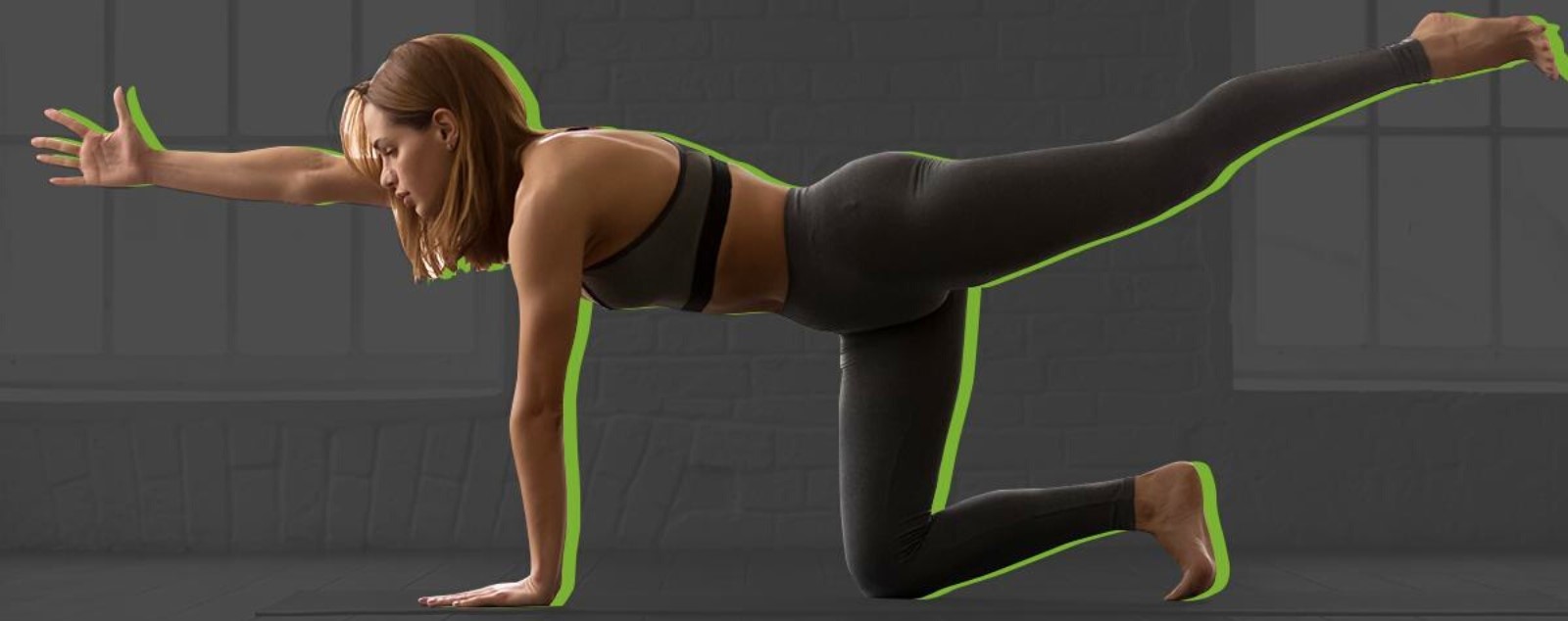Hey there, friend!
Let’s talk about something that supports us every day, helps us stand tall, and literally never turns its back on us – yep, you guessed it, our back! Our backs are like the strong and sturdy frames of skyscrapers, helping us stay upright, allowing us to move freely, and carrying the load of our daily lives. But, just like those skyscrapers, our backs need regular upkeep to stay strong and healthy. Without it, we might run into issues like back pain or poor posture – kind of like a skyscraper starting to lean or crumble. And let’s be honest, nobody wants that, right?
So, what’s the best way to keep our “personal skyscraper” in tip-top shape? Exercise! But not just any exercise. There are specific exercises that can do wonders for our back health. That’s why we’re here today, embarking on this exciting journey to explore the best exercises for a strong back.
Through this guide, we’ll delve into the anatomy of our back, common problems, and how a strong back contributes to our overall health. We’ll then roll up our sleeves and break down the best exercises to keep our back strong and healthy – from strength training to flexibility exercises. We’ll also talk about how to incorporate these exercises into our routine, and other factors to consider for back health, such as nutrition, posture, and sleep.
Whether you’re new to the world of fitness or an exercise enthusiast, this guide is tailored to help you understand your back better and keep it strong and healthy. So, are you ready to strengthen your “skyscraper” and reach for the skies? Let’s get started!
Understanding Back Health
A. Anatomy of the Back

Ever wonder what makes up your back? Let’s think of it like a skyscraper. You see, just like a skyscraper, your back is an amazing structure, layered and engineered to perform a variety of functions. The spine, our backbone, is like the skyscraper’s steel frame. It consists of 33 vertebrae – these are like the individual floors. Between each ‘floor’, we have the intervertebral discs which act like shock absorbers when we move, similar to how the flexible joints of a skyscraper allow it to sway gently in the wind. Supporting all these are muscles and ligaments, much like the cables and supports holding the structure steady.
B. Common Back Problems and Causes
Just as skyscrapers can run into issues over time, so can our backs. Some common problems include lower back pain, which can feel like a dull ache or a sharp shooting pain. This can be caused by a variety of things, from poor posture and weak muscles, to disc injuries or spinal conditions. Herniated discs, for example, are like if a floor in our skyscraper were to buckle or break. Sciatica, on the other hand, is when there’s a pain along the path of the sciatic nerve, which is like the building’s electrical system having a glitch.
C. The Connection Between Back Strength and Overall Health
Now, let’s look at why a strong back is so important. You see, a strong back is like a well-maintained skyscraper. It can withstand storms, support more weight, and is less likely to have problems down the line. It’s not just about preventing back pain either. A strong back helps you maintain good posture, which can reduce the risk of joint pain, muscle strain, and even cardiovascular issues. Also, it helps with your overall strength and stability. Think about it, the stronger the structure, the more stable it is, right? Same with your back.
The Importance of Exercise in Back Health
A. Role of Exercise in Preventing Back Issues
Imagine if we never cleaned or maintained our skyscraper – it wouldn’t look or function very well after a while, would it? Similarly, regular exercise is key to keeping our backs healthy and preventing issues. It strengthens the muscles that support our spine, helping to keep our “floors” properly aligned. Not only that, but exercise also increases blood flow, bringing essential nutrients to our spine and muscles, kind of like how regular cleaning ensures all parts of the building are kept in good condition.
B. How Regular Exercise Contributes to a Strong Back

You might wonder, “How exactly does exercise make my back stronger?” Well, think about how lifting weights strengthens your arm muscles. It’s the same with your back. Regular exercise, particularly targeted back exercises, can help strengthen your back muscles. This means that they can provide better support to your spine, improving your posture and reducing the risk of back pain. It’s like adding extra support beams to our skyscraper, making it even stronger and more resilient.
Best Exercises for a Strong Back: Detailed Analysis
A. Strength Training: Best Exercises for a Strong Back
i. Deadlifts
Think of deadlifts as the elevator installation crew for our skyscraper – they really get to the core of the building. Deadlifts are fantastic because they work your entire back, from your lower back to your shoulders. They teach your body how to lift heavy objects properly, using your legs and core, rather than just your back.
ii. Back Extensions
Back extensions are like adding extra reinforcements to the lower floors of your skyscraper. They specifically target the lower back muscles, which are crucial for maintaining good posture and spinal stability.
iii. Barbell Rows

Barbell rows are like the window cleaners for our skyscraper, ensuring every part is taken care of. They’re a versatile exercise that works all the major muscles in your back, helping to improve both strength and flexibility.
B. Bodyweight Exercises: Best Exercises for a Strong Back
i. Pull-ups
Pull-ups are like the safety drills in our skyscraper, they make sure everything is working together properly. They require coordination and strength from various parts of your body, including your back, arms, and core.
ii. Planks

Think of planks as the fireproofing for your skyscraper, creating a solid base that protects and strengthens. Planks are amazing for building core strength, which in turn, supports your back and promotes better posture.
iii. Push-ups
Push-ups, although primarily an upper body and core exercise, also play a crucial role in back health. They’re like the air conditioning system in the skyscraper, contributing to the overall wellbeing and function of the building without directly being a part of the structure.
C. Flexibility and Mobility Exercises: Best Exercises for a Strong Back
i. Yoga Poses
Yoga poses are like the architects planning for the future of our skyscraper. They encourage flexibility and strength, making sure your back is prepared for any challenges that might come its way.
ii. Pilates Moves
Pilates moves, much like yoga poses, are all about strengthening the core and improving flexibility. They’re like the building inspectors, ensuring every part of the building is functioning as it should.
iii. Stretching Exercises
Stretching exercises are like the regular maintenance and check-ups done on our skyscraper. They help keep the muscles flexible, strong, and healthy, and we need that flexibility to maintain the range of motion in the joints.
D. Low-Impact Exercises: Best Exercises for a Strong Back
i. Swimming
Swimming is like the janitorial staff for our skyscraper, providing a comprehensive clean-up without the harsh impacts. It’s a total body workout that’s easy on the joints and can help strengthen your back, core, and arms.
ii. Walking
Walking is like the daily operations team for our skyscraper, keeping things moving smoothly. It’s a simple but effective low-impact exercise that strengthens your lower back and core muscles while improving your cardiovascular health.
iii. Cycling
Cycling is like the wind turbines on our skyscraper, generating power without causing damage. It’s another fantastic low-impact exercise that strengthens the lower back and core while promoting cardiovascular health.
Incorporating Best Exercises for a Strong Back Into Your Routine
A. Designing a Balanced Workout Routine
So now that we know the exercises, how do we fit them into our routine? It’s like planning the work schedule for our skyscraper. We need to make sure every part of the building gets the attention it needs. So, your workout routine should be balanced, incorporating strength training, flexibility, and low-impact exercises. Remember, just like a skyscraper, every part of your back is important, so it’s essential to work all these areas in a balanced way.
B. Understanding Your Body’s Limits
Now, here’s the thing. Every skyscraper is different, and so is every back. Just like a building, our bodies have limits. It’s important to know these limits to avoid injury. Start small and gradually increase the intensity of your exercises. Don’t rush into heavy weights or advanced yoga poses. Take it slow, like careful construction, building up strength and flexibility over time.
C. The Importance of Consistency
Consistency is key in both building maintenance and back health. Imagine if we only cleaned our skyscraper once a month, it would get pretty messy, wouldn’t it? It’s the same with exercise. Consistent exercise helps keep your back strong and healthy. It’s not about one intense workout a week, but regular exercise that your body can get used to and build on.
Other Factors to Consider for a Strong Back
A. Nutrition for Back Health
Just like a skyscraper, our backs need the right materials to stay strong. That’s where nutrition comes in. A diet rich in calcium and vitamin D, for instance, can help maintain strong bones. Also, consuming enough protein is crucial for muscle recovery and growth. So, eat balanced meals, with plenty of fruits, vegetables, and lean proteins.
B. Importance of Proper Posture
Think about it this way: if our skyscraper starts leaning to one side, it’ll put more pressure on that side, right? This can cause damage over time. The same applies to our backs. Proper posture, whether sitting or standing, helps distribute weight evenly, reducing strain on your back muscles and ligaments.
C. Role of Sleep in Back Health
Finally, don’t forget about the importance of good rest. After all, even skyscrapers need downtime for maintenance. Good sleep allows your body to recover from the day, repair any damage, and rejuvenate for the next day. Plus, sleeping in the correct position can also help maintain a healthy back and spine.
Alright, my friend, let’s do a quick recap before we wrap this up. Just as maintaining a skyscraper involves a variety of tasks, from cleaning to repair work, maintaining a strong back involves a mix of exercises. Strength training exercises like deadlifts, back extensions, and barbell rows help build the muscular support your spine needs. Bodyweight exercises like pull-ups, planks, and push-ups work on your overall strength and stability. Flexibility and mobility exercises such as various yoga poses, Pilates moves, and stretching exercises keep your back agile and resilient. And let’s not forget the low-impact exercises like swimming, walking, and cycling, which are kind to your joints while keeping your back engaged.
Remember, your back health is a marathon, not a sprint. Keep it consistent, respect your body’s limits, and make sure to balance your routine. To get the best results, it’s good to follow reputable fitness experts. Websites like Mayo Clinic, Harvard Health, and WebMD provide great advice and guidelines on back exercises. You can also consider following certified fitness trainers on YouTube or other social media platforms for guided workouts and tips.
Let’s face it, our back is as essential to us as the framework is to a skyscraper. It allows us to stand tall, supports us in virtually all activities, and when kept strong and healthy, it contributes to our overall wellbeing. It’s not just about preventing back pain or looking good; a strong back can enhance your overall health and quality of life. It’s like having a well-maintained, sturdy skyscraper – it stands tall, withstands storms, and serves its purpose beautifully.
So, let’s give our backs the attention they deserve. Keep your “skyscraper” strong and magnificent. And remember, as with all fitness journeys, be patient with yourself. Progress takes time. Be proud of each step you take towards a healthier back. You’re doing great!



